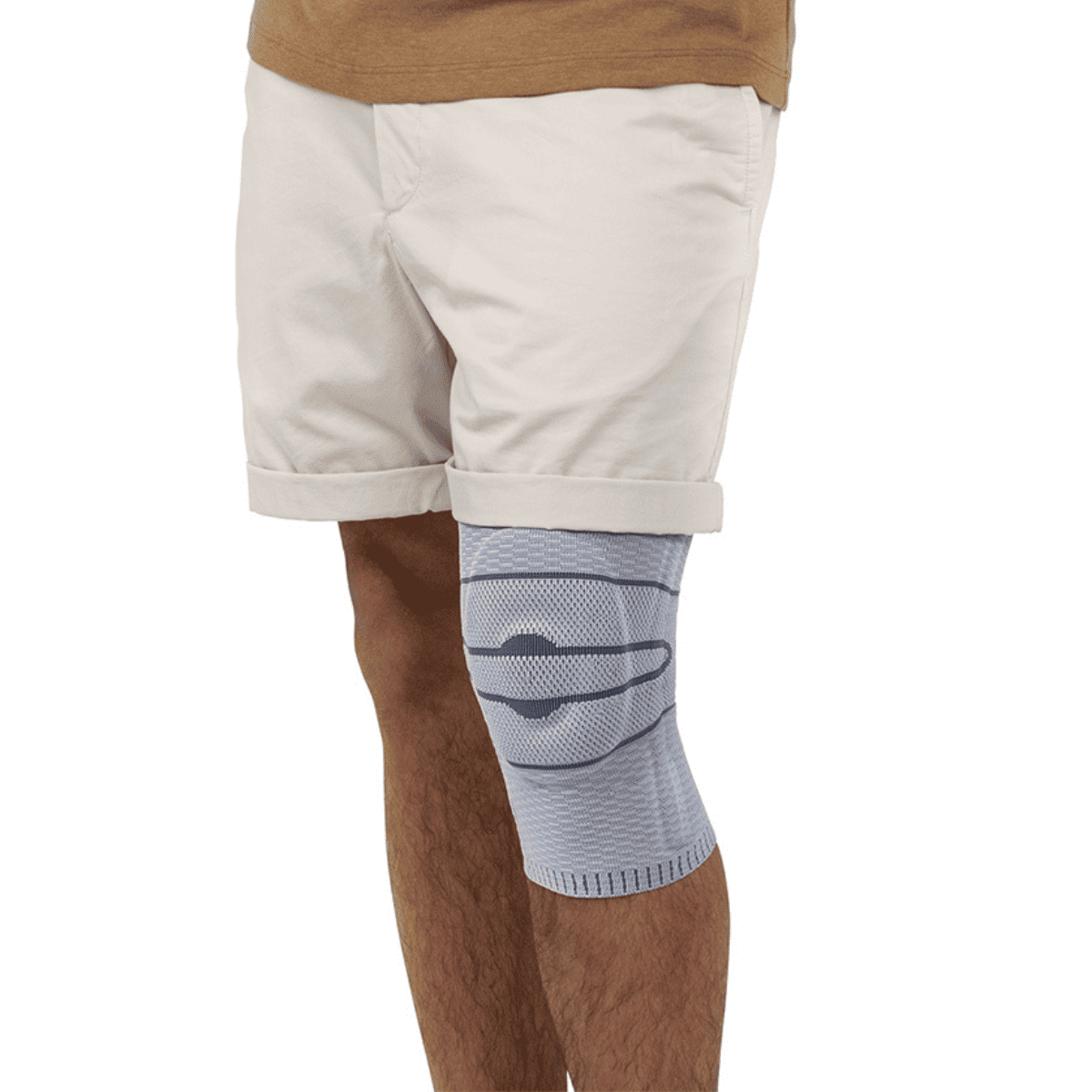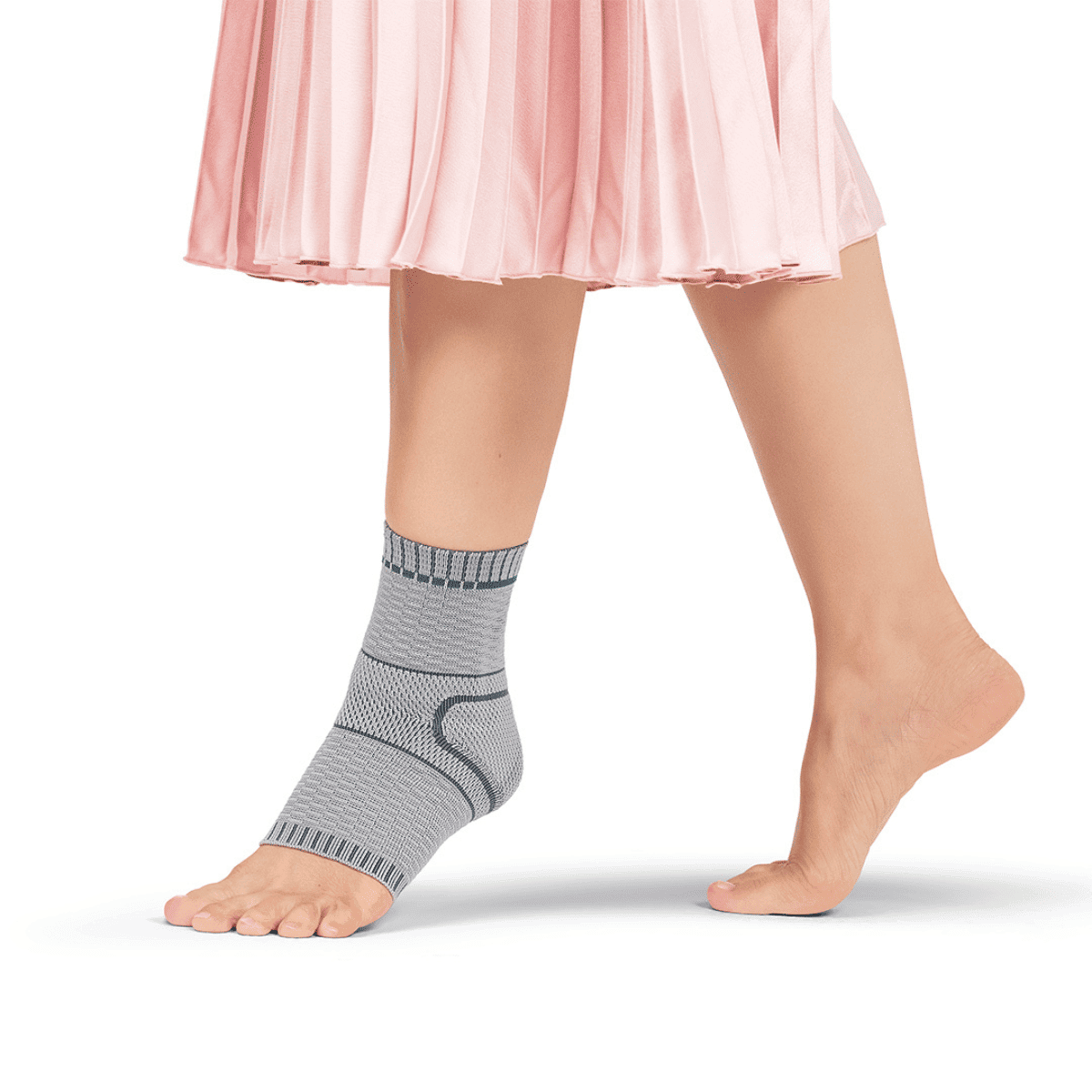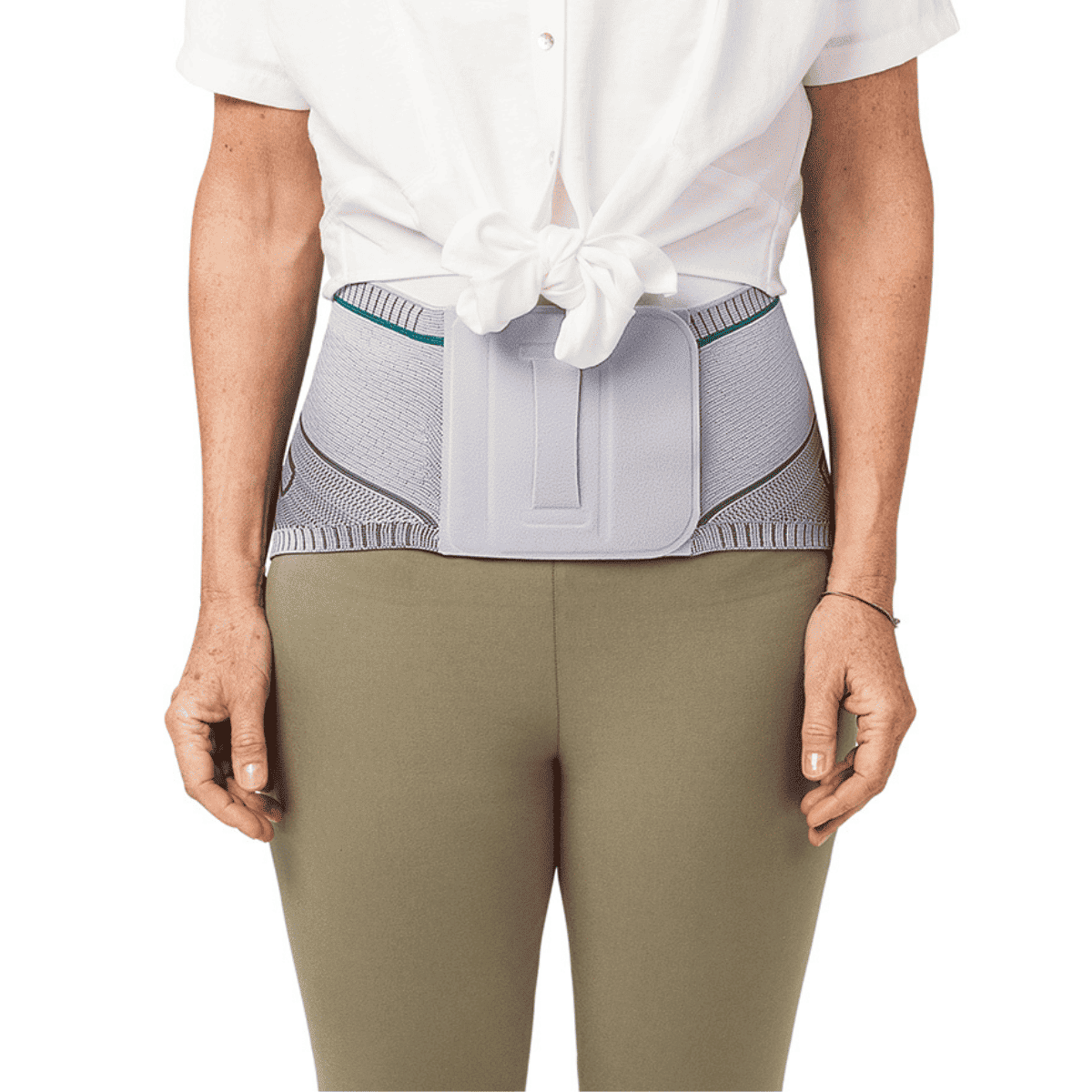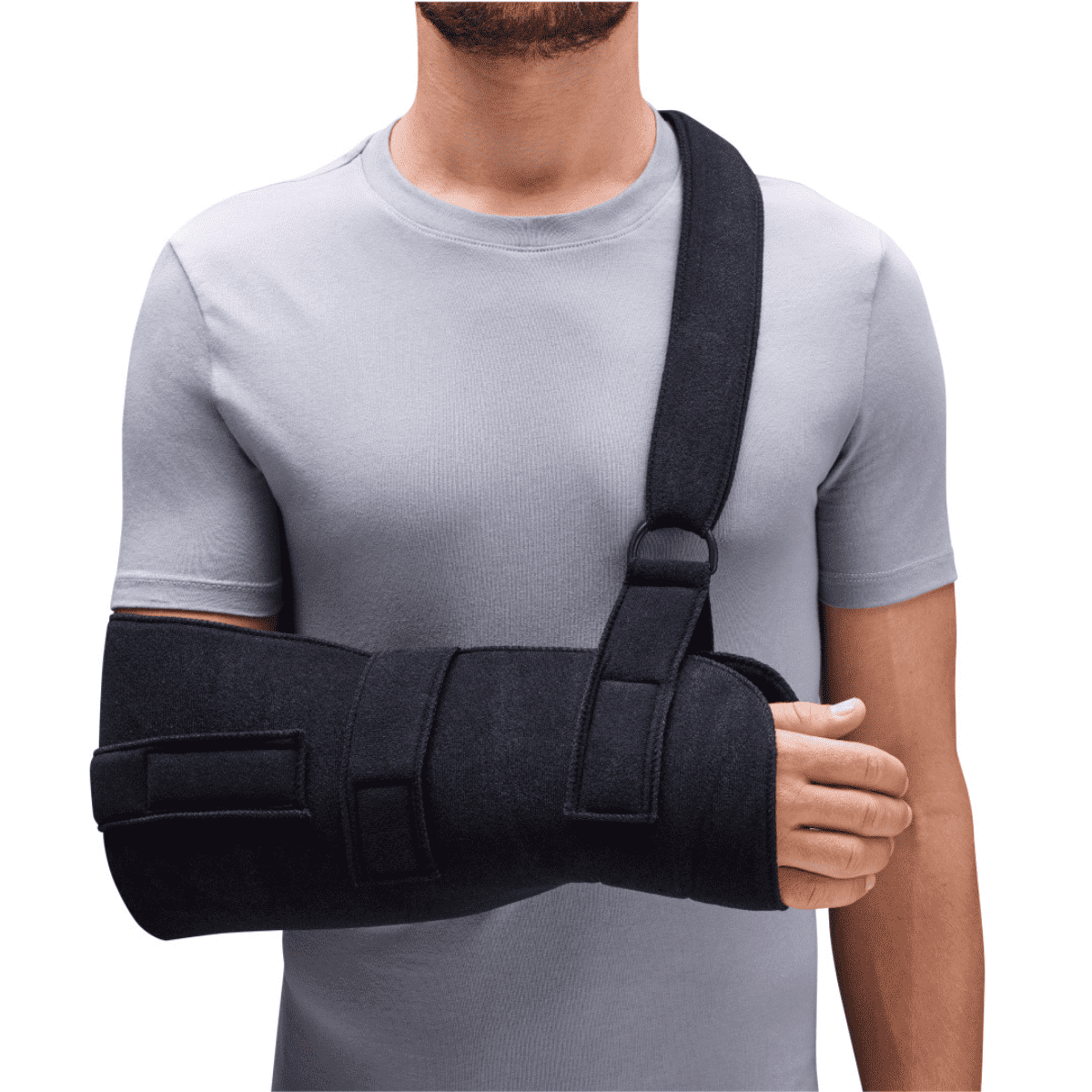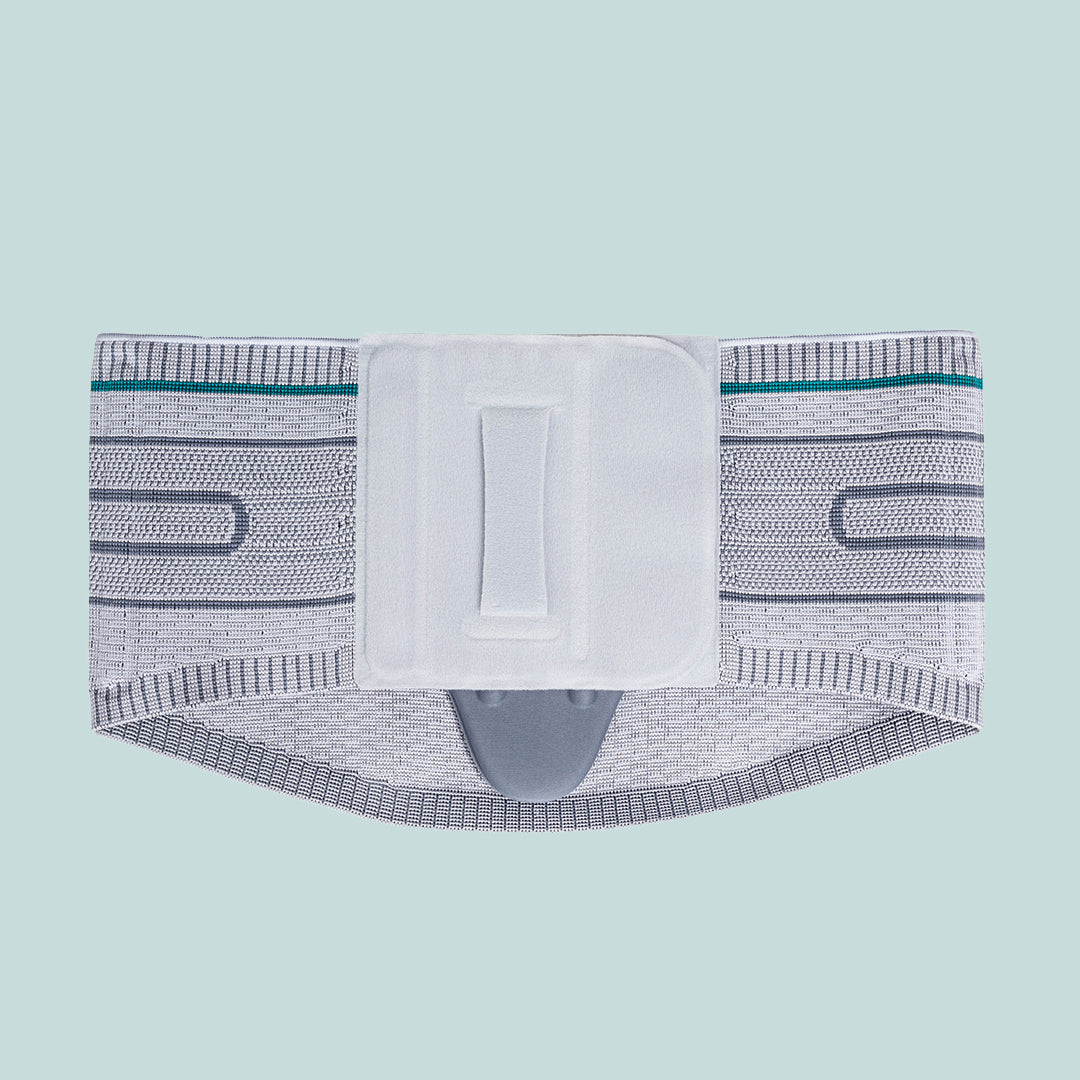Did you know that 80% of adults get back pain at some point? Fortunately, you can manage or even treat most cases of back pain at home with exercise, posture adjustments, and bracing. Here are our tips for back pain relief (and when to seek specialist advice).
Create an ergonomic workspace
If you sit all day, make sure your workspace is back-friendly.
- Your chair should be of a height that lets you bend your knees at 90 degrees, have your feet flat on the floor, and have your forearms on the desk.
- Your keyboard should be close enough that you don’t need to straighten your elbows or lean forward.
- If you don’t have a monitor, GET ONE. Whatever screen you use needs to be at eye level to prevent slouching.
- If you have trouble maintaining good posture, get a lumbar pillow or use a rolled-up towel between your sacrum and chair back.
Last but not least, even if your posture is picture-perfect, sitting for long periods places a lot of stress on your lumbar and sacrum, which can cause and worsen back pain. Make sure to get up, stretch, and walk around every 30 minutes or so to relieve some of the pressure.
Wear a brace
Back braces are an excellent option for back pain. They help support the spine, reducing pressure on disks and the spinal column. Some braces are also built with massage pads to relieve muscle tension and pain.
The b:joynz Back Support doesn’t have any rigid parts. Instead, it uses compression fabric and a gel massage pad to stimulate the muscles, helping them support the spine and improving your awareness of movement and posture. It's a great brace for mild pain and muscle retraining.
Check your posture
Good posture takes a lot of attention and work at first. But after a while, it will come naturally.
To check your posture, stand against a wall. Your buttocks, shoulder blades, and head should touch the wall. Ideally, there should be around 4 cm of space between the neck and the wall and the lower back and the wall. The distance may be slightly shorter or longer, depending on your height. However, you may need to adjust your posture if it’s over 5 cm or under 2.
For a more thorough examination, speak to your clinician. They can perform a physical exam and send you in for an X-ray to check the alignment of your spine.
To maintain good posture, make sure your ribs and hips align. Keep your shoulders back. Keep the back of the head aligned with your upper back.
Do some stretches to relieve back tension
Your back pain may be the result of muscle tension. Even if it isn’t, incorporating stretching into your daily routine is still a good idea since more flexible muscles help your body move properly and reduce pain. The best stretches to try include:
Knee to chest
This is a great stretch for the sacrum and has been shown to relieve sciatica pain.
- Lay on your back on an exercise mat.
- Bend one leg and bring it up toward your chest.
- Place your hands on the knee and gently pull it further, increasing the stretch.
- Hold the position for 20-30 seconds, then repeat for the other side.
Trunk rotation stretch
This stretch helps relieve tension in your lower back, hips, and core.
- Lay on your back on an exercise mat.
- Spread your arms out to the sides and place your palms flat on the floor.
- Bend your knees, bringing your heels as close as possible to your glutes.
- Slowly drop your knees down to one side, resting them on the floor.
- Hold the position for 20-30 seconds, then repeat for the other side.
Cat-cow
This quintessential yoga pose will improve flexibility in the spine.
- Stand on all fours on an exercise mat.
- While breathing in deep, drop your belly button toward the floor and lift your head to look at the ceiling.
- While breathing out, lift your belly button toward the ceiling and drop your head down.
- Repeat each movement five times.
- Make sure you perform these movements in a controlled fashion.
Strengthen your back to reduce back pain
Strong back muscles are essential to support your spine. Weak back muscles may result in poor posture, increased injury risk, tension, and pain as more pressure is put on your spinal disks and nerves. The best exercises to start a back-strengthening routine include:
Superman hold
This deceptively difficult exercise works the entire posterior chain and is excellent for working on posture issues.
- Lay on your front on an exercise mat.
- Bring your arms out in front of you with your palms flat on the floor.
- Activate your core and lift your chest, arms, head, and legs off the floor as far as is comfortable.
- You should feel the movement activate your lats, glutes, and trapezius.
- Hold the position for ten seconds, then slowly lower back down.
- Repeat ten times in 3 sets.
- As you get stronger, you can increase your reps or sets. You can also add some weight - just make sure you can lift it while staying in good form and without tipping forward.
Single-arm dumbbell row
This exercise targets the lats and upper back. It is a safe way to add weight to your routine since you’ll support your spine.
- Grab a dumbbell appropriate to your level.
- Place your left knee and left palm on a bench. Do not bend your left elbow. Your right leg should be straight with your foot flat on the floor.
- Hold the dumbbell in your right hand and activate your core. Do not arch or curl your back.
- Pull the dumbbell up, pointing your elbow at the ceiling. As you do, your arm should stay close to your body, and you should squeeze your shoulder blades together.
- Slowly lower the dumbbell back down into the starting position.
- Complete ten reps in 3 sets. Repeat for the other side.
- As you get stronger, increase the dumbbell weight. To make it even more challenging, hold the top position for a few seconds before releasing.
Dead bugs
Dead bugs are a fantastic workout for your core. A strong core can improve balance and coordination and reduce pain - especially in the lower back.
- Lay on your back on an exercise mat.
- Raise your arms so they’re straight above you.
- Bend your knees at 90 degrees and raise your legs so your calves are. perpendicular to the floor. Tuck your pelvis, flattening your back against the floor. This is your starting position.
- Slowly lower your right arm and straighten and lower your left leg until it almost touches the floor.
- Lift them back into the starting position, taking care not to arch your back.
- Repeat for the other side.
- Do ten reps per side in 3 sets.
Try hot and cold therapy
Ice packs are great for acute pain, while heat packs help relieve tension. For a fresh injury (especially one that’s swollen), apply an ice pack for 15 minutes every couple of hours for three days.
For chronic pain and injuries older than three days, apply a heat pack for 20 minutes as needed. You can also take a warm bath.
Check your sleep
It could be the case that your mattress, pillow, or even sleeping position disagrees with your spine.
When you sleep, your spine should maintain good posture. A good mattress and pillow are essential here, as they help correctly distribute your weight and support your spine.
Firmer mattresses and flatter pillows are best for back sleepers. They keep your spine aligned while supporting and filling the gaps your low back and neck curves create. Firm mattresses are also recommended for heavier individuals as they prevent excess sinking.
For side sleepers, specialists recommend a foam pillow to maintain the neck’s alignment with the spine. They also recommend placing a pillow between your knees and ankles to ensure your hips don’t tip sideways when you sleep. Generally, plush to medium mattresses are best to ensure your hips and shoulders sink in enough. The lighter you are, the more plush you’ll likely need.
Medium to firm mattresses are also recommended for belly sleepers to prevent hip sinking. However, healthcare professionals, such as physios, generally recommend avoiding belly sleeping as it places a lot of stress on the neck.
If you toss and turn a lot, a medium mattress offers the best of both worlds.
When to see a specialist for back pain
Most types of back pain aren’t an emergency and will fade in time with appropriate exercise, flexibility training, and posture adjustments. However, if your back pain came on suddenly, is severe, and/or comes with the following symptoms, seek specialist advice ASAP.
- Loss of bowel or bladder control.
- Numbness, tingling, or shooting pain through the spine or down the legs.
- Sudden muscle weakness.
- Loss of sensation.
- Worsening pain.
- Development of new pain.
- Sudden onset of instability, poor balance, or loss of coordination.
Back pain relief: the takeaway
To relieve back pain, you will most likely need a combination of stretching, strengthening, bracing, and posture correction. You should also check your work and sleep spaces to see their effects on your posture and pain levels. If you feel that your condition is worsening at any point, it is best to seek specialist advice for a custom care plan.

